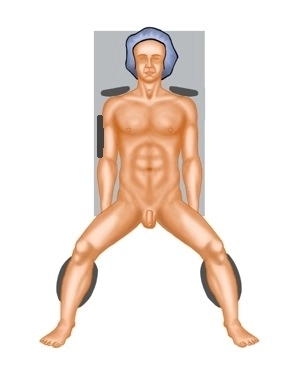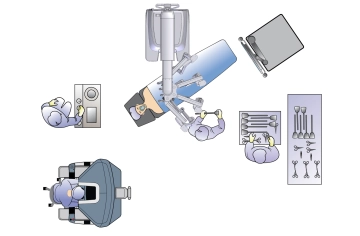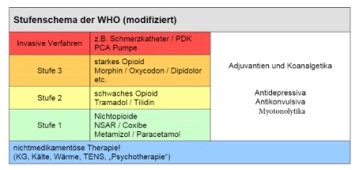Note: Postoperative care after colorectal procedures should be embedded in a fast-track concept as "enhanced recovery after surgery" (ERAS). This aims for rapid recovery and reduction of postoperative complications and hospital stay.
Key points of the perioperative ERAS concept are:
· Preoperative eutrophy and normovolemia with fluid intake up to 2 hours preoperatively,
· Contemporary anesthesia management and use of regional techniques,
· Avoidance of drains and invasive accesses as much as possible,
· Minimally invasive blood-sparing surgical techniques,
· Postoperative pain management with reduction of opioid requirement,
· Early mobilization,
· Early nutritional build-up, and
· Timely discharge planning using discharge management.
Postoperative Measures:
· Monitoring: post OP: Recovery room, avoid ICU/IMC if medically possible
· Venous access: Central venous catheter removed by 1st post-op day, leave one cannula,
· Nasogastric tube removed at the end of the operation
· Urinary catheter: removed by 1st post-op day
· Drain removal: Target drain at the anastomosis removed by the 5th post-op day at the latest, quadrant drain (after emergency surgery) removed from the 3rd post-op day if volume < 100ml over 24h and clear secretion
· Mobilization: Early mobilization on the evening of the operation. Gradual resumption of physical activity, full load if pain-free, e.g., on the day of operation in the siesta chair, standing and walking in the room from the first day, mobilization in the corridor from the 2nd post-op day
· Physiotherapy
· Breathing exercises
· Nutritional build-up: Sip drinking + yogurt/high-calorie drink on the day of operation, tea/soup/yogurt + high-calorie drink on the 1st post-op day, light full diet from the 2nd post-op day
· Infusion: 500-1000 ml on the first post-op day, then only if oral fluid intake is insufficient
· Antibiotics: Single-shot intraop, or according to clinic standard for perioperative bowel decontamination
Note: Consider continuing antibiotics for perforated tumor, fecal contamination, ileus condition, or general risk factors.
· Bowel regulation/activity: Mg 300 mg 3x/d until first bowel movement, then macrogol 1-3 sachets/d, peristalsis should have started by the 3rd day, maintain high-normal potassium, laxative regimen: 1. Tea with Laxoberal/Dulcolax suppository, 2. Prokinetics: MCP / Prostigmin i.v., 3. Neostigmine s.c. or i.v., if necessary, Relistor when opioids are given
· Thrombosis prophylaxis: In the absence of contraindications: for moderate thromboembolic risk (surgical procedure > 30 min duration): low molecular weight heparin in prophylactic dose (usually "Clexane 40"), possibly adapted to weight or disposition risk until full mobilization is achieved (also after discharge in case of malignancy possibly continue for up to 4 weeks), physical measures, ATS
Note: Follow the link to the current guideline for prophylaxis of venous thromboembolism (VTE)
Caution: When administering heparin, consider: renal function, HIT II (history, platelet control)
· Blood works: on the 1st post-op day, and then every 2-3 days with normal progress until discharge, immediately if clinical deterioration,
Note: CRP as an important marker for anastomotic insufficiency
· Dressing every 2 days, with cutaneous suction dressing every 5 days
· Clips/sutures: if not absorbable, removed after 10 days
· Postoperative analgesia
Note: Various scales are available for quantifying postoperative pain, allowing the patient to determine their own pain level multiple times a day, such as the NRS (numerical rating scale 0–10), the VAS (visual analog scale), or the VRS (verbal rating scale).
Caution: Aim to minimize the use of opioids and NSAIDs (adverse effects on bowel motility and anastomotic healing)
- Epidural catheter removed by the pain service of anesthesia on the 3rd – 4th post-op day
- Basic medication: Oral analgesia: 4x1g Novalgin/3x1 g Paracetamol, also combinable, e.g., fixed Novalgin and as needed Paracetamol up to 3x/day
- Administration of Novalgin: 1g Novalgin in 100 ml NaCl solution over 10 minutes as i.v. infusion, or 1 g as oral tablet or 30-40 drops Novalgin orally
- Administration of Paracetamol: 1g i.v. over 15 minutes every 8h, or 1g suppository every 8h rectally (Caution: consider anastomosis height), or 1g as oral tablets
Caution: The basic medication should be tailored to the patient (age, allergies, renal function).
- As-needed medication: For VAS >= 4 as needed Piritramid 7.5 mg as i.v. infusion or s.c., or 5 mg Oxigesic acute
- If pain persists post-op >= 4, administration of a sustained-release opioid (e.g., Targin 10/5 2x/day)
Note: If pain occurs only during mobilization, an as-needed medication should be given 20 minutes before mobilization.
Note: Follow the link to PROSPECT (Procedures Specific Postoperative Pain Management) and to the current guideline for the treatment of acute perioperative and post-traumatic pain and consider the WHO stepwise approach.
- Discharge: From the 5th postoperative day onwards
- Sick note: Individually – depending on the degree of recovery and type of work, e.g., office work after 3 weeks post-op, physical work after 4 weeks post-op
- Interdisciplinary tumor board to determine further procedures
- Follow-up treatment:
- Adjuvant chemotherapy for colon cancer should be started as soon as possible after successful surgery if indicated.
- According to the AWMF guideline, adjuvant therapy should be performed from UICC stage III and can be performed from UICC stage II.
- Certain risk constellations are defined in which adjuvant therapy should also be performed in stage II. These include: T4, tumor perforation/intraoperative tear, emergency surgery, too few lymph nodes.
- In stage II with microsatellite instability, adjuvant therapy should be omitted.
- In stage III, an oxaliplatin-containing adjuvant therapy should be used (FOLFOX4, mod. FOLFOX6, CAPOX/XELOX)
- In stage II and with contraindications to oxaliplatin, monotherapy with fluoropyrimidines is recommended.
- For low risk (T1-T3, N1), a three-month duration is recommended.
- For high risk (T4 or N2), therapy should be conducted over 6 months.
- Medical report: The medical report should include information on: diagnosis, therapy, course, histology, comorbidities, current medication, tumor board decision with intended follow-up treatment, note on informing the patient about the malignancy of the disease and further procedure, continuation of VTE prophylaxis, postoperative nutrition (avoid heavy food for 4-6 weeks)
- Rehabilitation: Register through the social service
- Cancer registry notification




